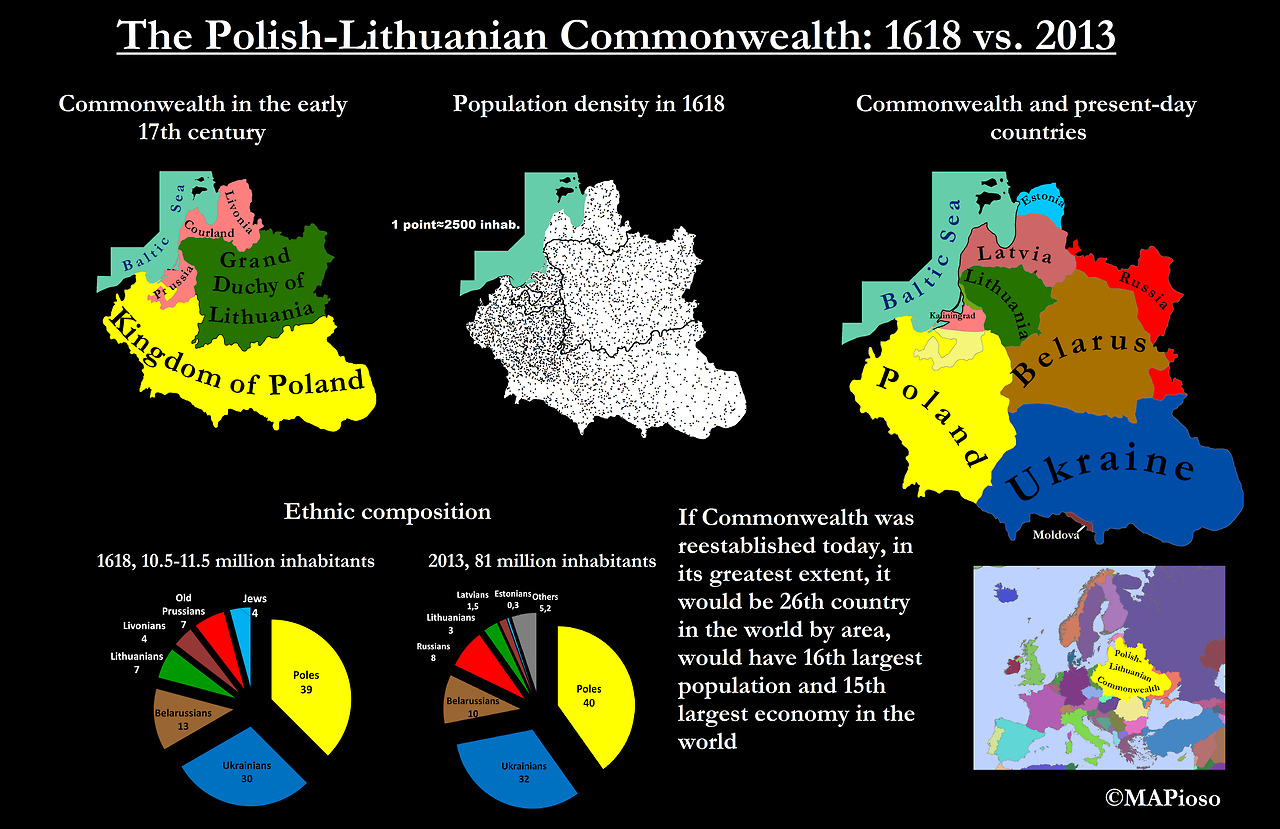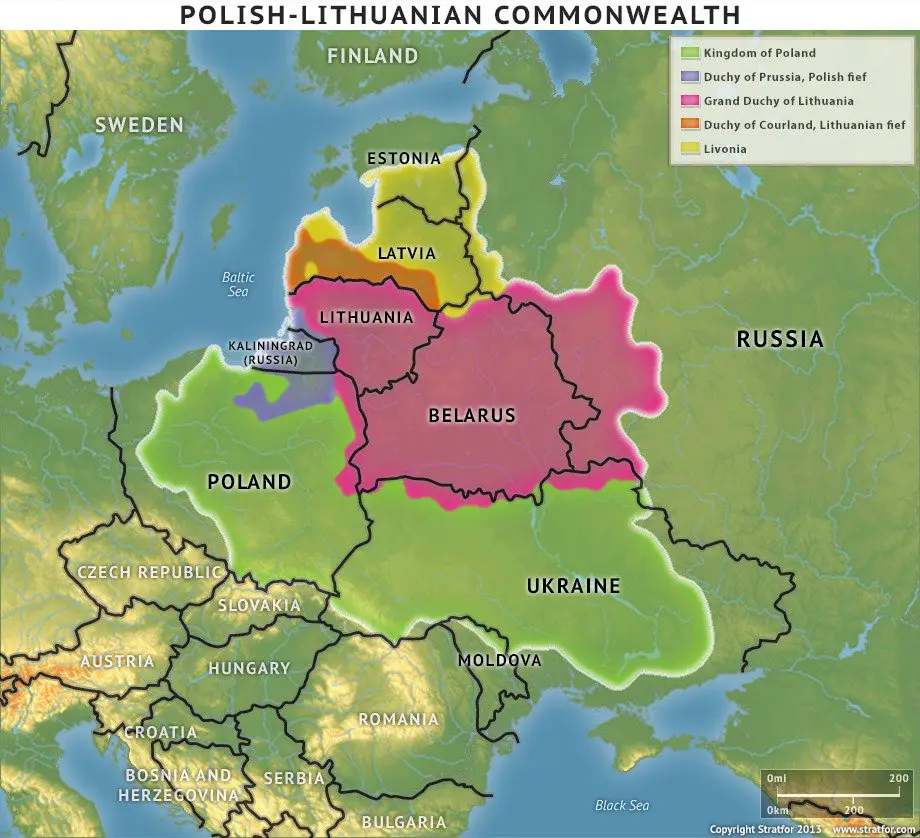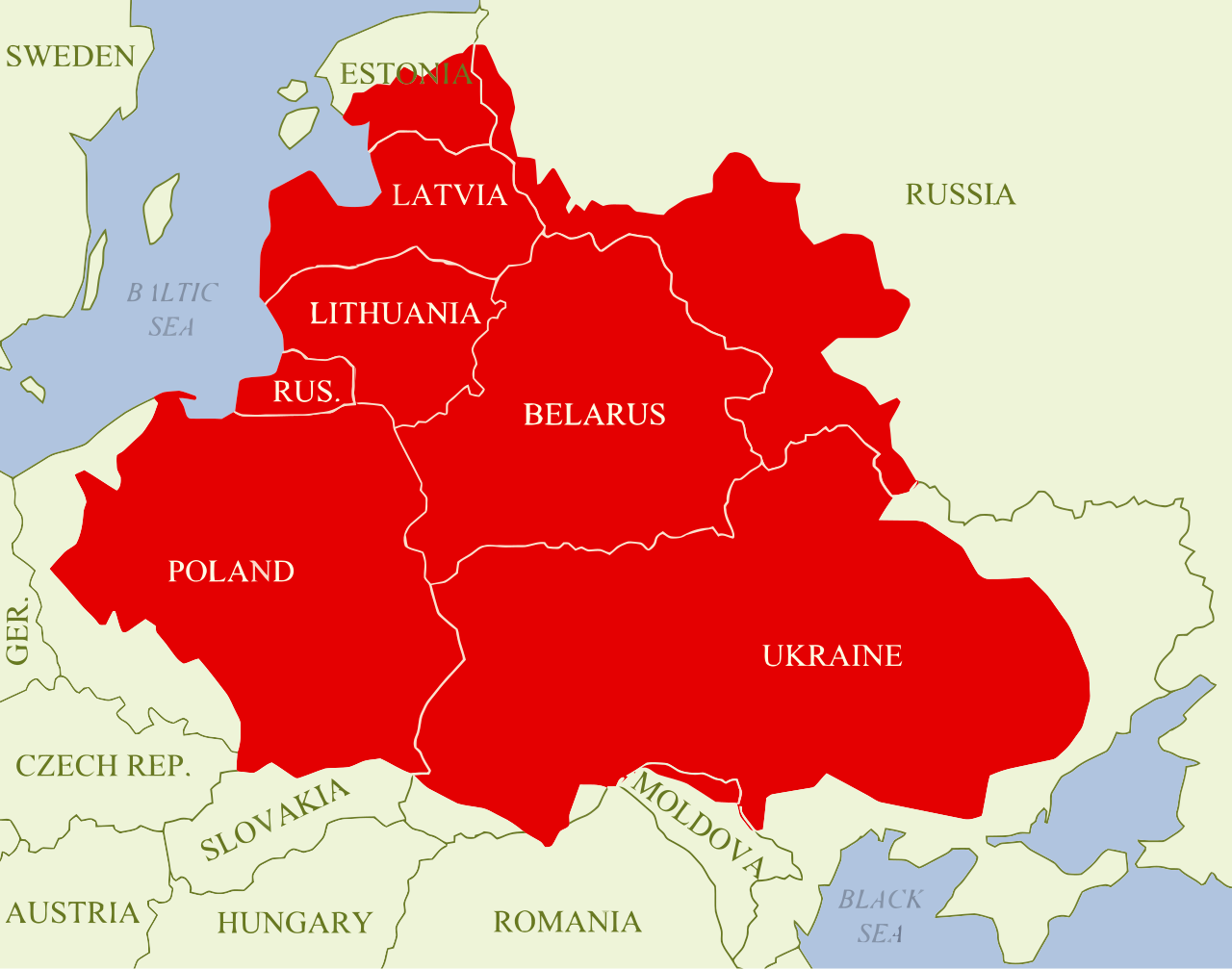Rise & Fall of Poland-Lithuania: Every year
From small beginnings as a periphery on the edge of Christendom in the 11th Century, Poland rose to become a major component of European politics by the High Middle Ages. Lithuania took much the same path and was by by the largest centralised state in Europe during the Late Middle Ages and early renaissance. The final unification of the two powers in 1569 brought their nations to new heights, and allowed them to take on powers such as Russia, Sweden and the Ottomans. Although initially successful, these wars eventually became the Commonwealth’s downfall, as it lost large swaths of territory in the north and east to Sweden and Russia, respectively. The Commonwealth came to an end in 1795 after three separate partitions. Both Poland and Lithuania endured the 19th Century without any real state of their own, until after the First World War when they both gained independence. After a short occupation during the Second World War by Germany and the USSR, Poland became part of the Eastern Bloc, whilst Lithuania was a state within the USSR. They remain in this state until the collapse of the USSR in 1991, after which they’ve both been free, independent nations.
The Polish–Lithuanian Commonwealth was one of the largest and most populous countries of 16th- to 17th-century Europe. At its largest territorial extent, in the early 17th century, the Commonwealth covered almost 1,000,000 square kilometers or 400,000 square miles.
If the Polish-Lithuanian Commonwealth was reestablished today
Here is a map made by MAPioso that shows what would happen if the Polish-Lithuanian Commonwealth was reestablished today. With a population equal to modern Germany’s in the early 17th century, it would have been one of the biggest countries in Europe.










Very interesting. The music is awful and would have been nice if the view had been a bit broader, giving a larger perspective on Poland and Lithuania’s places on the continent. That said, still quite interesting. Thanks!